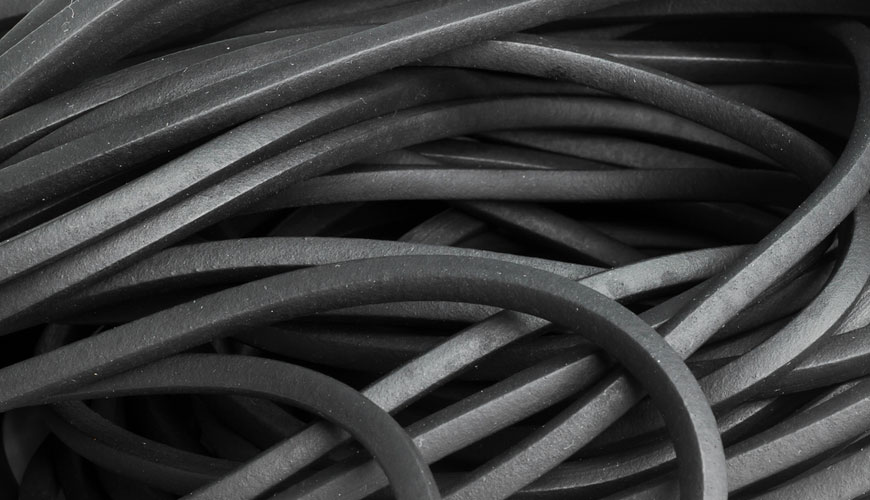

The ASTM D471 test covers the procedures necessary to evaluate the comparative ability of rubber and rubber-like compositions to withstand the action of liquids. ASTM D471 describes a method for assessing the effects on rubber materials caused by exposure to standardized fuels, oils, and other fluids.

Specific fluids, temperatures and test times are often defined by the end user of materials to meet the specific needs of the application.
This standard is designed mainly for testing the following materials:
Vulcanized rubber samples cut from standard sheets (ASTM D3182-16 Standard practice for rubber - Materials, equipment and procedures for mixing standard compounds and preparing standard vulcanized sheets)
Samples cut from fabric covered with vulcanized rubber (ASTM D751-19 Standard test methods for coated fabrics)
Finished commercial products (ASTM D3183-10 Standard practice for rubber - Preparation of test pieces from products)
Some rubber objects, such as gaskets, hoses, diaphragms, and sleeves, are exposed to oils, greases, fuels and other fluids during service. This exposure is continuous or intermittent and occurs over wide temperature ranges. The properties of rubber objects deteriorate during exposure to these liquids, negatively affecting the performance of the rubber part, which causes malfunctions.
The test method presented with the ASTM D471 standard attempts to simulate service conditions. However, since service conditions vary so much, it does not provide any direct correlation with actual part performance. It only provides comparative data on which to make judgments on expected service quality.
The ASTM D471 standard is more appropriate for specification conformity testing, quality control, peer-reviews, and research and development studies.
The test method described here includes: mass change, change in volume, tensile strength, change in elongation and stiffness, size change for water-insoluble liquids and mixed liquids, mass change with liquid only on one surface, determination of the mass of soluble matter extracted from the liquid, fracture in coated fabrics. resistance, bursting strength, tear strength and adhesion changes and calculation of test results.
ASTM D471 Test Procedure
The initial weight of the test specimens for weight variation is measured and recorded. Samples are then immersed in specified liquids in suitable containers – volatile liquids such as fuels require special care. The containers are then placed in ovens at specified temperatures for specified times. At the end of the exposure time the samples are allowed to return to room temperature. The samples are wiped dry and the final weight is measured and recorded.
Values stated in SI units should be accepted as standard. Values in parentheses are for informational purposes only.
This standard does not purport to address all, if any, safety concerns associated with its use. It is the responsibility of the user of this standard to establish appropriate safety and health practices and to determine the applicability of regulatory restrictions prior to use.
Our organization also provides testing services to businesses within the framework of laboratory testing services, within the scope of ASTM D471 Standard Test Method for Rubber Property - Effect of Liquids. Do not hesitate to contact our laboratory EUROLAB for your testing and certification requests.
To get an appointment, to get more detailed information or to request an evaluation, you can ask us to fill in our form and reach you.